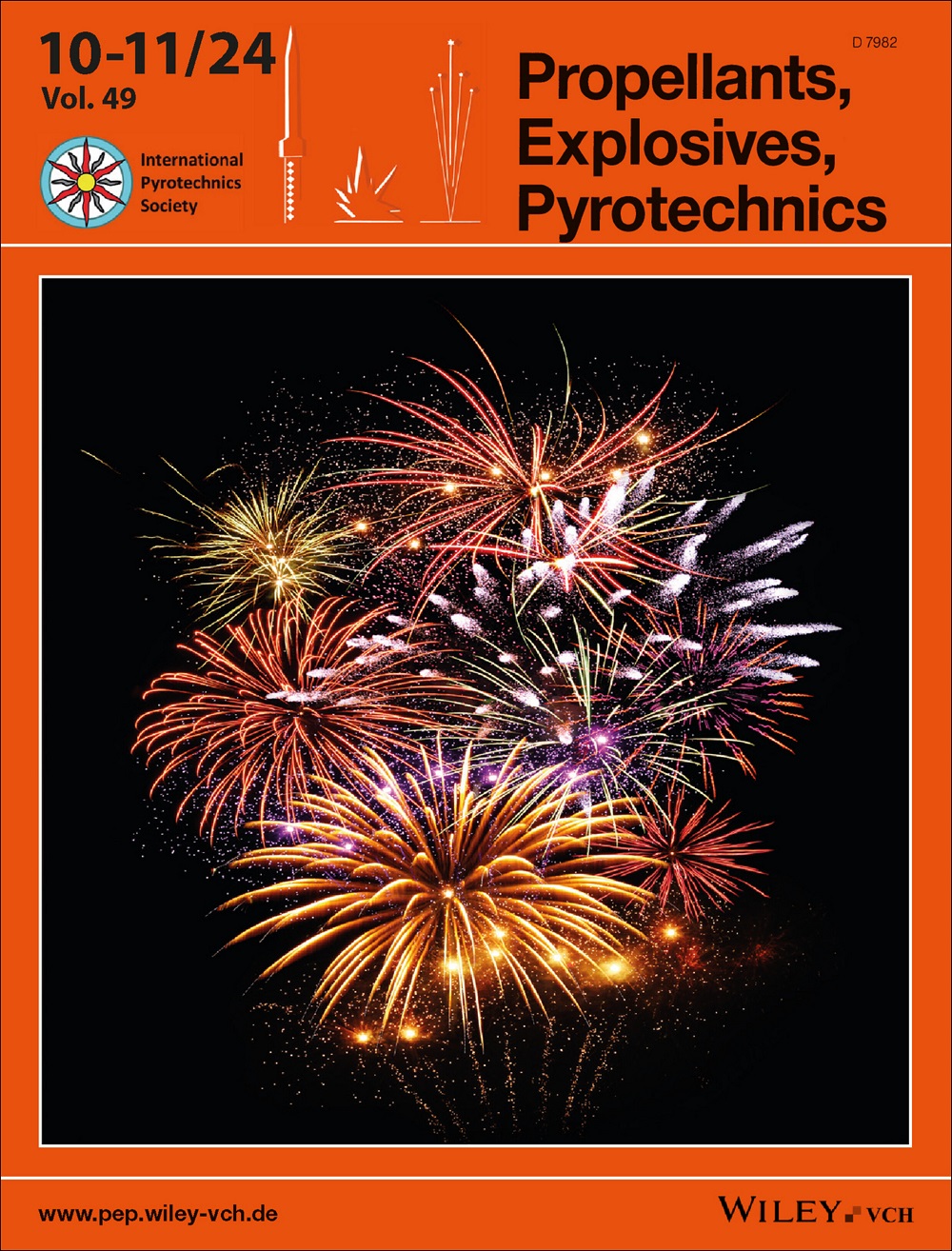Estimating sensitivity with the Bruceton method: Setting the record straight
IF 2
4区 工程技术
Q3 CHEMISTRY, APPLIED
引用次数: 0
Abstract
Accurate estimates of sensitivities of energetic materials are crucial for ensuring safe production, transport, usage and destruction of explosives. When estimating sensitivities, researchers most commonly follow the NATO standard guidelines (STANAGs), in which the Bruceton method is imposed. Introduced in 1948, this method contains (i) an experimental design for choosing which stimulus levels to measure at and (ii) a recipe for computing sensitivity estimates. Although the former experimental design is supported by both theory and simulations, few modern researchers are aware that the latter recipe was only intended as a pen‐and‐paper approximation of the maximum likelihood estimates, which are easy to compute today. The persistent use of this outdated approximation has led to many unfortunate misconceptions amongst users of the Bruceton method, including the rejection of many perfectly valid data sets and neglect of uncertainty assessments via confidence intervals. This is both dangerous and unnecessarily wasteful. This paper sets the record straight and explains how researchers should estimate sensitivity via maximum likelihood estimation and how to construct confidence intervals. It also shows explicitly how wasteful said approximation is via both simulations and with real data.用布鲁塞顿法估算灵敏度:澄清事实
准确估算高能材料的敏感度对于确保爆炸物的安全生产、运输、使用和销毁至关重要。在估算灵敏度时,研究人员最常遵循的是北约标准指南(STANAGs),其中采用了布鲁塞顿方法。该方法于 1948 年推出,其中包括:(i) 用于选择测量刺激水平的实验设计;(ii) 用于计算灵敏度估计值的配方。虽然前者的实验设计得到了理论和模拟的支持,但很少有现代研究人员意识到,后者的方法只是作为最大似然估计值的纸笔近似值,而最大似然估计值在今天很容易计算。持续使用这种过时的近似值导致布鲁塞顿方法的使用者产生了许多不幸的误解,包括拒绝接受许多完全有效的数据集,以及忽视通过置信区间进行不确定性评估。这既危险又造成不必要的浪费。本文将以正视听,解释研究人员应如何通过最大似然估计来估算灵敏度,以及如何构建置信区间。本文还通过模拟和真实数据明确显示了上述近似方法的浪费程度。
本文章由计算机程序翻译,如有差异,请以英文原文为准。
求助全文
约1分钟内获得全文
求助全文
来源期刊

Propellants, Explosives, Pyrotechnics
工程技术-工程:化工
CiteScore
4.20
自引率
16.70%
发文量
235
审稿时长
2.7 months
期刊介绍:
Propellants, Explosives, Pyrotechnics (PEP) is an international, peer-reviewed journal containing Full Papers, Short Communications, critical Reviews, as well as details of forthcoming meetings and book reviews concerned with the research, development and production in relation to propellants, explosives, and pyrotechnics for all applications. Being the official journal of the International Pyrotechnics Society, PEP is a vital medium and the state-of-the-art forum for the exchange of science and technology in energetic materials. PEP is published 12 times a year.
PEP is devoted to advancing the science, technology and engineering elements in the storage and manipulation of chemical energy, specifically in propellants, explosives and pyrotechnics. Articles should provide scientific context, articulate impact, and be generally applicable to the energetic materials and wider scientific community. PEP is not a defense journal and does not feature the weaponization of materials and related systems or include information that would aid in the development or utilization of improvised explosive systems, e.g., synthesis routes to terrorist explosives.
 求助内容:
求助内容: 应助结果提醒方式:
应助结果提醒方式:


